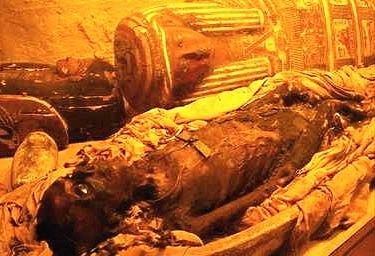What Are Mummies?
Mummies have been around for thousands of years, and humans have been able to be preserved for thousands of years by being mummified, but how do they last so long? What makes a mummy a mummy?

The process by which corpses are preserved for the afterlife is intricate and complex.
February 8, 2021
According to BBC, the word “mummy” derives from the Persian word, “mummiya,” which is the blackened state of Egyptian bodies. The term is now generally used as human parts that have their tissue preserved.
Historical Eve explains that there were eight different steps to the mummification process:
Step One
The body is washed in water and palm oil for purification.
Step Two
The internal organs are removed, and a small incision is made in the left side of the body where the organs are removed besides the heart. The heart was thought to be needed in the afterlife. The organs were then washed, packed in natron which is a chemical salt to preserve the parts and they are placed in canopic jars.
Step Three
The brain would then be discarded by using a rod to go through the nostril. It went into the skull to break the brain and drain out through the nose.
Step Four
The body is then left to dry and covered with natron to absorb any moisture and is left out for 40 days to dry.
Step Five
The body is washed in water again and is covered in oils to keep the skin elastic. The natron is taken out of the body, and the body is then stuffed with sawdust and linen to make it look more lifelike.
Step Six
The body is now wrapped in linen strips starting from the head and neck, then the fingers and toes. Once they are covered up, they cover up the arms and legs. To keep the linen strips together, they used liquid resin as glue.
Step Seven
Charms or amulets are placed between the layers of the body to protect it when traveling to the afterlife.
Step Eight
A prayer is made by a priest to ward off evil spirits from the body. The mummy would usually be given a mask of Anubis, which is a god associated with the afterlife.
There are several layers to the case of the mummy. Dk findout! has a visual of the layers. The layers consist of the sarcophagus, which is what the mummy is put into. An inner coffin, second coffin, and first coffin cover the mummy. The sarcophagus is a stone box that holds the mummy in it. The inner coffin surrounds the mummy, and is made of solid gold. The second coffin surrounds it, and is made of wood and covered in gold leaf. The first coffin consists of the same materials, but with the head of Tutankhamun.
In Ancient Egypt’s time period of mummies, it’s amazing how the Ancient Egyptians were not only able to preserve the bodies of their pharaohs for decades, but the bodies have been able to last for hundreds of years. Taking a look at the mummies may give us a look into what the past was like. For now, the bodies are in coffins and in museums to be looked at by people walking by.








